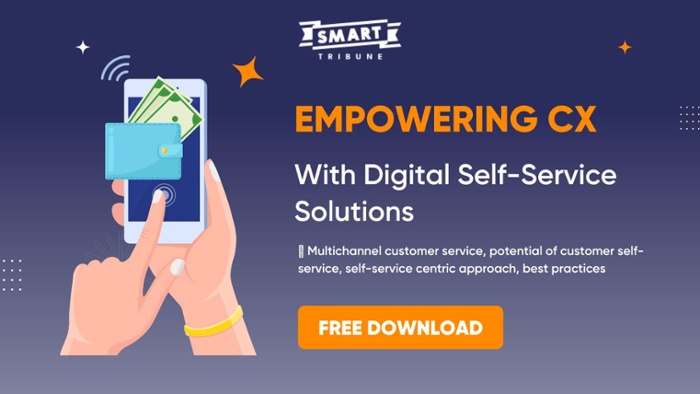
If every company is unique, each user experience should be, too. However, the design of customer journeys is often based on very similar maps and cartographies.
Consumers generally follow the same paths before making a purchase, but no need to panic: If the steps of the customer journey touchpoints are often identical for most companies, it’s the personalized steps and details within these processes that make the difference.
Empathy, emotion, customization, a differentiated purchase experience...How do we incorporate these elements at every step of the customer journey?
In this article, we help you to better understand the 8 steps of the customer journey by giving you the keys to deliver a memorable customer experience.
Step n°1: Recognizing needs and seeking information, the first step of the customer journey
The traditional schema of customer journeys starts with this step. A customer need is activated: In order to find a solution, the consumer goes in search of information, often in a cross-channel way.
This step is crucial for the company, which must anticipate all customer needs and the solutions it can provide.
All along the digital journey, the company must keep in mind one thing: It is unthinkable to make customers lose time. All information must be easily and simply accessible.
The set up of a dynamic FAQ can make a big difference for internet users by automating proposed questions and answers.
Its predictive capacity and its format create a simple and personalized user experience. As such, each piece of information communicated corresponds to an identified need. Even this very first step saves the user time!
Step n°2: The comparison, inevitable phase of the customer journey
At this second step of the user journey, the customer compares the information they found online. Often, the comparison is based on the opinions of existing customers. It is therefore essential to cultivate one’s e-reputation, to have the opportunity to get to the conversion phase.
There’s often only one opportunity to make a good first impression, especially at the comparison stage!
One of the keys to success at this step is anticipation: What are the strengths of my competitors? Which aspects of my company may turn away my customers?
Anticipating the potential obstacles or what can bring the most to users represents a major advantage for this step of comparison, and then for decision making.
Step n°3: Decision making and purchasing, the decisive step of the buyer journey
This step is crucial in the conversion tunnel as it symbolizes the transition to the conversion phase. The consumer has made their choice, that which leads to a relationship with the company, concretized through a purchase.
At this stage, the customer feels confident. In order to not deceive them, you have to remember that the customer journey is not just a purchasing journey; it’s also an emotional and experiential journey, not to be underestimated.
Maintaining a trusted customer relationship at the moment of purchase requires total transparency on the part of the company.
According to a Baymard study (2017):
60% of online shopping carts are abandoned because of shipping costs that are considered too high at the point of placing the order.
And also:
37% of abandoned carts are due to the requirement to create an account and 28% are due to a purchase process deemed too long.
These three statistics lead to the following conclusion: On the conversion journey, total transparency of information related to the purchase and the fluidity of the process are the gauges of a successful customer experience!

Step n°4: Reception and use by the customer
In the trajectory of the customer journey, this step is certainly the most important for the customer. However, it’s invisible to the company. So how can it be optimized regardless of the exploitation of customer journey optimization services or not?
At this step of the customer journey, the relationship should be based on support. Is the delivery composed of several steps? Is an installation or assembly required? Communicate all information in a timely manner.
Does using the product require specific knowledge or information? Consider sharing everything they must know and reassure the customer of your presence for even the smallest need.
Step n°5: Decision and evaluation in the customer journey
In order to guarantee the transition to conversion and loyalty, being able to use the product must have as few obstacles as possible. At this step of the user journey, the customer makes their own opinion.
Does the product work? Is the customer satisfied? Have all the steps of the customer journey gone as hoped?
The customer will be able to evaluate their feelings in regards to the company, product and service they tested. This step can intervene in the short- or medium-term depending on the purchase.
At the same time, it sets up the following steps, because it’s thanks to this acknowledgement that customer satisfaction can be evaluated by the consumer.
The collection of customer testimonials is essential for measuring customer satisfaction. In order to do this, the company can solicit customers through satisfaction surveys, email, SMS...or monitor customer comments in social networks and Google!

Step n°6: Maintenance, an important step for after-sales service
Adopting a customer-centric approach is essential at every step of the customer journey, but even more so at the moment when customers need help. After-sales service, therefore, comes into place regarding:
- delivery problems
- malfunctions
- returns
- requests for reimbursement
This step can occur at any moment: It is therefore essential to anticipate key scenarios, to limit customer frustration.
According to an IPSOS study (2017):
This step of the user journey is a true irritant, which represents an overall dissatisfaction rate of 30% for returns and 36% for cancellations.
It’s important to privilege customer relations based on empathy and personalization. For example, the company can propose to the customer an interactive online help feature or a human-operated phone service, leaving the choice to the customer to be autonomous or supported according to their needs.
The more the client feels confident and privileged thanks to different modes of contact and proposed solutions that meet their needs, the more this step will occur without damage or repercussions to the future of the relationship.
Step n°7: Loyalty, the penultimate phase of the user journey
At this step of the user journey, the customer decides whether or not to pursue a relationship with the company. Even if the customer already judged the product or service in itself, it is their opinion of the overall experience that will be a determining factor. To maintain a loyal and sustainable relationship with a company, the client must be taken into account and feel valued.
Different methods are available to the company for enriching their customer interactions and measuring customer expectations:
- thank you emails
- soliciting feedback
- sending personalized promotions
At this step of the journey, customer knowledge and attention must be at a maximum in order to transform customers into real brand ambassadors!
Step n°8: The recommendation, the final step of the customer journey
This step of the customer journey is the final step that testifies to a successful customer experience: when the loyal customer transforms into a brand ambassador who recommends the brand and product to those around them.
The voice of the client can be very powerful and impact the notoriety and image of the brand and conversion rates.
In order for the client to demonstrate strong commitment, we have to cultivate a feeling of belonging. Exclusive invitations to events, an advantageous referral system for the customer, the integration of a user community, etc. Each personalized experience counts in order to reach this key step of the customer journey!
Knowing the different steps of the omnichannel customer journey is essential for modelling all of the paths that a relationship between a brand and its customer can take. And by analyzing the journeys, you can better listen to your customer and set up action plans to improve their satisfaction.
Optimizing every step is key to offering a memorable customer experience and to improving your conversion rates!


.png)



